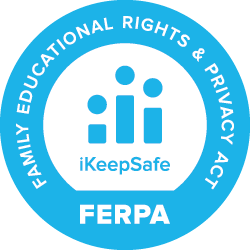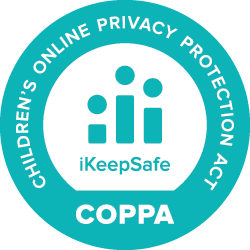CSI
In this activity, you’ll investigate the answer to a big question - and save energy as you do.
Facilitation Tips and Potential Student Answers
Be sure to scroll to the bottom of the Educator Overview until you see STUDENT CONTENT BELOW THIS LINE. Interleaved in the Student Content section, you will see educator facilitation tips and potential student answers displayed in red, italic text when applicable.
Resource Title:
CSI
Description:
In this activity, you’ll investigate the answer to a big question - and save energy as you do.
Target Grade Level:
Grades 5-8
Discipline or Course (Audience):
Science
Time Frame:
Two to three 45-minute sessions without extensions
Suggested Grouping:
3-4 students
Educator Prep:
Students often associate recycling with the blue bin at the curb or a receptacle in the cafeteria. But that’s just the beginning. Every year scrap recyclers transform more than 135 metric tons of used materials into new, useful products. In a world where both raw materials and energy are in short supply, this is a vital component of both conservation and economic growth.
In this activity, students build understanding through research to answer a question with four subcomponents. They use a spreadsheet to compile and graph their data. Directions are given for Excel software, but they can easily be changed to accommodate other software that might be available at schools.
Tell students you came to school with some interesting questions on your mind. The questions can be anything that might be interesting, like:
- Is there life in clouds?
- How many national championships has your favorite team won?
- Who was the first permanent resident of your community?
Ask students where they might help you find the answers. For most students today, the first answer that would come up would be the Internet. One of the most crucial issues for human communities today involves the use of our planet’s resources. As populations grow, we are constantly challenged to find new sources of minerals and energy, and to conserve and reuse those we have already found. It’s a big and complex problem with many components—a systemic problem. Misinformation abounds. But there are many clues to a solution, and some can be found with Internet research.
Gather Data: Teacher Directions
Have students consider the question, “Why is recycling important?” Explain that this will be the focus of today’s quest for information. Review with students how to search and how to determine whether an Internet site is providing reliable information.
Preparation Directions:
- Gather materials.
- Arrange for Internet access for research.
- Review graphing through Excel or other software as applicable.
Hand graphing, or graphing the lower-volume quantities separately, helps. While a material like lead may not be recycled in the quantities of steel or copper, its high toxicity makes recycling even more important.
Finally, help students conceptualize the time scales mentioned in the texts. For example, plastic might last for 500 years in a landfill; glass for a million!
Guide students as they create their graphs. You may differentiate as needed based on student abilities and experience (some students might be using computer software; others may be drawing on graph paper). Students may find that the scale of recycled plastic and tires is so much greater than the tonnage of other materials that their graphs don’t show the smaller quantities. You might have students create two separate graphs to allow for the different data ranges.
Investigate Further: Teacher Directions
Assign teams one of the five questions under Investigate Further. You might also give teams choices or have them come up with their own question. Have students record the websites they use and indicate sources on their presentations.
Facilitate class presentations. Students should explain their poster, chart, or graphic to other groups. Emphasize that these presentations contribute to a broader understanding of the issues involved. This models how real-world scientists collaborate.
Reflect and Apply: Teacher Directions
Students should discuss how this may not adequately provide a comparison. Since paper is so much lighter than steel, one ton of paper is actually bigger in volume than one ton of steel. Using weight also does not illustrate the importance of recycling each material. For example, lead is recycled in smaller quantities than steel or copper. Yet, because lead is very toxic to the environment and to human health, it is even more important that people recycle it.
Extension: Teacher Directions
Have students imagine that the town has called a public hearing to discuss the cost-benefits of recycling and whether or not there should be more community action. Have students create a one-page statement that argues for civic action. Students should use evidence to support their claims. Have them use their data collected during the activity as key to arguments they present. Further research regarding a cost analysis of recycling may be necessary.
Remote Learning Adaptations:
This resource is appropriate for remote learning; no adaptations or modifications are necessary.
STUDENT CONTENT BELOW
Imagine you are collecting the used bottles, cans, and paper in your school cafeteria for recycling. A visitor approaches you to ask: “Why are you doing that?” You know it is good for the environment. But now, when challenged to present the facts, you’re not really certain how or why. It seems almost a mystery. We often associate recycling with the blue bin at the curb or a receptacle in the cafeteria. But that’s just the beginning. Every year, scrap recyclers transform more than 135 metric tons of used materials into new, useful products. What are the real benefits to our society and the environment?
In this activity, you will investigate the importance of recycling through internet detective work. You will discover how many different materials are recycled and then compile and graph your data. Finally, you will imagine you are going to testify at a public hearing where you will prepare a statement as to why your community should recycle.
Materials:
- Device with internet access
- Excel (or other graphing software, or graph paper)
- Poster board
- Markers
- World map (for one group)
- Rulers, as needed
Safety Notes:
- When using technology, engage in safe, legal, and ethical behavior; this applies to devices (hardware), applications or programs (software), and interactions with others.
- There are no anticipated physical safety risks associated with this Activity.
Gather Data
Conduct research to find out how many tons of the following materials are recycled in one year. Note, you may need to convert some of the measurements you find:
- Iron and steel
- Copper
- Glass
- Paper
- Lead
- Plastic bottles
- Aluminum
- Zinc
- Tires
- Open your spreadsheet program.
- Type in the titles: “Material” and “Tons per Year” in columns A & B.
- Use your data to fill in the columns.
- Highlight your data. Click the “Insert” tab and choose a bar graph (histogram) format.
- If the scale of your graph makes some columns so tiny you can’t see them, you can change it. You may also make two graphs: one for the larger-scale data and another for the smaller-scale data.
Investigate Further
Your teacher will assign your group one of the following questions to investigate.
Using research from 3-5 reliable websites, create a graph, chart, or poster to show your results to the class. List the websites you find.
Questions for Investigation:
- How much energy is saved when we use recycled aluminum, paper, copper, steel, plastic and glass? Make a bar graph to show the energy savings.
- Where do our recycled materials go? Color a world map to show the main countries that buy our products.
- How much space can we save in landfills by recycling paper? (You’ll need two clues—how much paper we use and how much space a ton of paper takes up). Draw a landfill with paper and one without.
- How could recycling help reduce carbon dioxide emissions into our atmosphere? Create a poster comparing the emissions from making new bottles and recycling older ones.
- When a tire blows, it might be sent to a landfill! What can recycling tires save? Make a wheel diagram to show the answer.
Present your findings to the class.
Reflect and Apply:
- Compare and contrast the data you collected in Gathering Data using the graph you created in Investigating Further. Which materials represent the highest data points? List the top 3. Which materials represent the lowest data points?
- What could be misleading when using a measurement like weight to compare amounts of recycled materials? How does one ton of paper with one ton of steel compare?
- Discuss how recycling is related to issues like energy and global climate change.
- What would you say to the school visitor who asked why recycling was important? Use specific examples or data from your graphs or from other classmates’ presentations.
Extension:
Imagine your community is having a public hearing to decide whether there should be more recycling. You are going to testify at that hearing. Pick one of the sets of facts you’ve collected in this activity and prepare a one-page statement to make to your Board. Include graph(s) and/or other evidence to be as convincing as possible.
Journal Question:
What things could you change at home to encourage your family to recycle?






